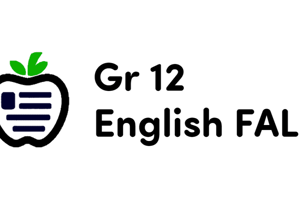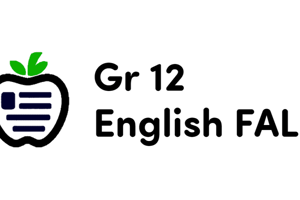Podcast
Questions and Answers
The past tense is used to describe actions that have already occurred in the ______
The past tense is used to describe actions that have already occurred in the ______
past
The present continuous tense is formed by placing 'is/am/are + ______' in the sentence
The present continuous tense is formed by placing 'is/am/are + ______' in the sentence
verb-ing
He was cooking dinner when the ______ rang
He was cooking dinner when the ______ rang
phone
The present perfect and the past perfect are two main types of ______ tenses
The present perfect and the past perfect are two main types of ______ tenses
Perfect tenses are used to describe actions that have completed before another action or ______ in time
Perfect tenses are used to describe actions that have completed before another action or ______ in time
The past perfect tense describes actions that were completed before another action or point in time. It is formed by placing 'had + past participle': - She had ______ the dog before she left for work.
The past perfect tense describes actions that were completed before another action or point in time. It is formed by placing 'had + past participle': - She had ______ the dog before she left for work.
Present continuous tense is used to describe actions that are happening now. It is formed by using 'is/am/are + verb-ing': - They are currently ______ for their exams.
Present continuous tense is used to describe actions that are happening now. It is formed by using 'is/am/are + verb-ing': - They are currently ______ for their exams.
Present perfect tense is used to describe actions that have completed in the past but are still relevant to the present. It is formed by using 'has/have + past participle': - She has ______ Paris twice.
Present perfect tense is used to describe actions that have completed in the past but are still relevant to the present. It is formed by using 'has/have + past participle': - She has ______ Paris twice.
Simple present tense is used to describe actions or states of being that are happening now. It is formed by using the base form of the verb: - The sun is ______ brightly today.
Simple present tense is used to describe actions or states of being that are happening now. It is formed by using the base form of the verb: - The sun is ______ brightly today.
Present perfect tense is used to describe actions that have completed in the past but are still relevant to the present. It is formed by using 'has/have + past participle': - We have ______ Paris twice.
Present perfect tense is used to describe actions that have completed in the past but are still relevant to the present. It is formed by using 'has/have + past participle': - We have ______ Paris twice.
Flashcards
Past Tense
Past Tense
Describes actions that happened in the past.
Past Perfect Tense
Past Perfect Tense
Describes an action completed before another past action.
Present Continuous
Present Continuous
Describes actions happening now.
Present Perfect Tense
Present Perfect Tense
Signup and view all the flashcards
Past Continuous
Past Continuous
Signup and view all the flashcards
Simple Present
Simple Present
Signup and view all the flashcards
Simple Past
Simple Past
Signup and view all the flashcards
Perfect Tenses
Perfect Tenses
Signup and view all the flashcards
Continuous Tenses
Continuous Tenses
Signup and view all the flashcards
Present Tense
Present Tense
Signup and view all the flashcards
Study Notes
Tenses: A Comprehensive Guide to English Grammar
In the realm of language, tenses represent the way we express time in sentences. They help convey the time at which an action takes place or when it is ongoing. In this article, we will explore four primary tenses—past, continuous, perfect, and present—and provide examples for each.
- Past Tense Past tense is used to describe actions that have already occurred in the past. The past tense of regular verbs is formed by adding -ed or -d to the base form of the verb. For example:
- He went to the store (simple past tense)
- She had eaten breakfast (past perfect tense)
- Continuous Tenses Continuous tenses describe actions that are ongoing or in progress. There are two main types: present continuous and past continuous.
Present Continuous: This tense is used to describe actions happening now. The present continuous tense is formed by placing "is/am/are + verb-ing" in the sentence:
- They are currently cooking dinner.
Past Continuous: The past continuous tense describes actions that were happening at a specific point in the past. It is formed by placing "was/were + verb-ing":
- He was cooking dinner when the phone rang.
- Perfect Tenses Perfect tenses are used to describe actions that have completed before another action or point in time. The two main types of perfect tense are the present perfect and the past perfect.
Present Perfect: This tense describes actions that have completed in the past but are still relevant to the present. It is formed by placing "has/have + past participle":
- We have visited Paris twice.
Past Perfect: The past perfect tense describes actions that were completed before another action or point in time. It is formed by placing "had + past participle":
- She had walked the dog before she left for work.
- Present Tense Present tense is used to describe actions that are happening now or are general truths. There are three main types of present tense: simple, continuous, and perfect.
Simple Present: This tense is used to describe actions or states of being that are happening now. It is formed by using the base form of the verb:
- The sun is shining brightly today.
Present Continuous: This tense is used to describe actions that are happening now. It is formed by using "is/am/are + verb-ing":
- They are currently studying for their exams.
Present Perfect: This tense is used to describe actions that have completed in the past but are still relevant to the present. It is formed by using "has/have + past participle":
- She has visited Paris twice.
In conclusion, the four tenses—past, continuous, perfect, and present—are essential for accurately expressing time in English sentences. By understanding how to form and use these tenses, you will be well on your way to mastering the English language.
Studying That Suits You
Use AI to generate personalized quizzes and flashcards to suit your learning preferences.




